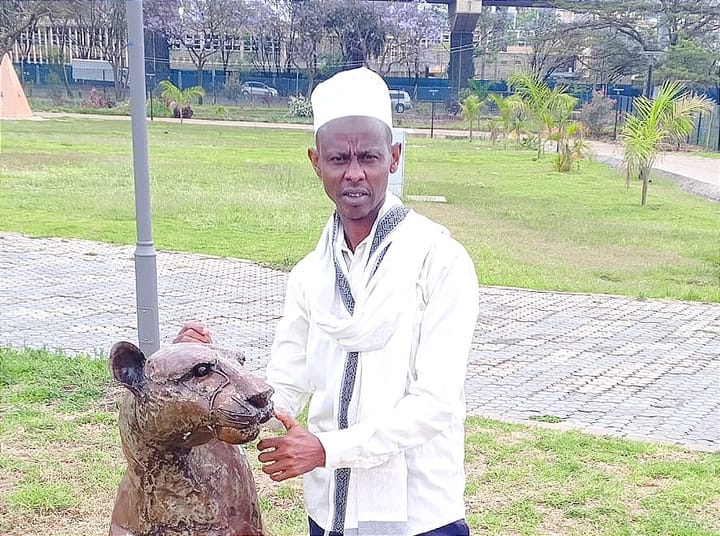Rattling comfort zones: How judges are responding to climate litigation

Courts across the world are increasingly having to assess lawsuits with climate arguments. How prepared are judges to take on these cases and how are they responding?
While the rest of the UK was mulling wine, two High Court judges instead spent the winter mulling over an important climate lawsuit against the British government.
The case was niche but important; NGO Friends of the Earth had argued that a decision to give more than a billion dollars in public money to a gas project in Mozambique was illegal.
During a three-day hearing in December, the judges heard claims that the project’s climate impact had not been properly assessed and that the UK was “embarrassed” into funding it even while it was considering ending overseas support for fossil fuels.
The judgment was due to be announced in mid-March but, unusually, the judges were split.
According to Justice Justine Thornton, the government had “no rational basis” to show that the project’s financing was consistent with the Paris Agreement and its aim to limit global temperature rise to 1.5°C.
She held that UKEF – the UK’s export credit agency which dished out the money – had failed to legally assess the project’s total emissions by taking into account those produced through the ‘end-use’ of the gas, for example by burning it in power plants. It was also inconsistent about the project’s likely effects on global emissions, she said.
All this made it “unreasonable” and therefore illegal, Justice Thornton concluded.
But the other judge, Lord Justice Jeremy Stuart-Smith, disagreed. He said there was “no legal or policy obligation to quantify scope 3 emissions” and the Paris Agreement “contains numerous aims or aspirations that may prove to be in tension or frankly irreconcilable on the facts of a given case, this case being a paradigm example”.
The case has now been referred directly to the Court of Appeal.
While the UK has hardly been a hotspot for successful climate litigation, it was not the first case that revealed tensions in judicial views on the environment.
In February, three Court of Appeal judges were divided about a council’s approval of an oil drilling project in Surrey. Although two judges dismissed the case, one thought the council’s decision had been “legally flawed” because it omitted assessment of the “relevant and required effects of the proposed development”.
Sarah Finch, who brought the lawsuit, has now asked the Supreme Court for permission to appeal.
Dr Thomas Muinzer, senior lecturer in energy transition law and co-director of the Aberdeen University Centre for Energy Law at the University of Aberdeen, says the latest decision came as a surprise, “given that it departs from what we might think of as the more unified, conservative sorts of rulings that we have tended to expect from UK climate litigation so far”.
He adds that it “might well be a barometer that is indicative of broader shifts in judicial thinking”.
Judges are no longer asking questions about the fundamental science of climate change, says Dr Margaretha Wewerinke-Singh, assistant professor of public international law at Leiden University. “No single court anywhere in the world, even in the most politically conservative jurisdictions, has denied the climate science.
“However there are huge differences in the implications of those conclusions.”
Little world
In a striking foreword to a report on climate litigation by the Asian Development Bank (ADB), Antonio Herman Benjamin, a justice of the National High Court of Brazil and lead founding member of the Global Judicial Institute on the Environment, writes that the subject “rattles judges’ comfort zones”.
He says the complex global nature of climate change, both in who causes it and who it affects, makes it a difficult subject for the law which tries to put things in clearly defined boxes.
“The ‘little world’ of a judge is one of unavoidable boundaries: political and judicial arenas that fragment ecological spaces instead of respecting them…. Even more complicated for the generalist judge is the inability to see, touch, hear, or directly know the subject of the case.”
Rupert Stuart-Smith (no relation to the aforementioned judge), research associate in climate science and the law at the University of Oxford’s Sustainable Law Programme, says scientific literacy matters in climate litigation and this varies hugely among judges.
He co-wrote a paper for Nature Climate Change on filling the evidentiary gap in climate litigation which notes various cases in which judges said scientific evidence simply could not exist to prove the causal link between the emissions of the defendants and the losses of the plaintiffs. “That's basically wrong,” says Stuart-Smith. “In reading judgments as a climate scientist, sometimes it can be quite shocking.”
On the other hand, he says there are instances where judges “have tried to approach the issue in a much more sophisticated way and get a really good grasp of the science”. Brian Preston, chief judge of the Land and Environment Court of New South Wales who adjudicated over a case relating to the Australian Rocky Hill Coal Project, is often referenced as an exemplar.
Sarah Mead, senior legal associate at the Climate Litigation Network, stresses that climate is not the only complicated issue courts have to handle. “Of course, it is easier for a judge if they have some existing knowledge of the issues at hand, particularly as this is a relatively new issue. But even so, the judges in the German Constitutional Court decision of Neubauer engaged in great detail with the science of climate change.”
Plaintiffs can help judges out by providing clear, high-quality scientific evidence in their cases, says Stuart-Smith.
Judges as activists
In some countries, judges in climate cases face accusations that they are taking on too activist a role or are not respecting the separation of powers between the judiciary and the executive. Such criticism was levelled at Justice Preston.
It certainly seems to stir up more major sociopolitical questions than some other types of litigation, says Dr Jolene Lin, associate professor at the National University of Singapore’s Faculty of Law. “People deem the responses to climate change to be political questions: How do you organise your economy? How do you get your energy? But once countries start to make laws to regulate an issue, like climate change, then you bring the judges into this conversation.”
Justice Benjamin seems to dismiss such criticism in the ADB report, describing climate change as “no more politically charged than national security, torture, discrimination, abortion, immigration, corruption, same-sex marriage, or election disputes”.
“They’re not being objective. They're being impartial, which is different. They exercise their knowledge and expertise, which comes from the context.”
Dr Lin notes that partiality is much less of an question in countries with weaker governments and more activist judiciaries, such as India, and adds that most judges are very careful to be neutral - and to be seen to be neutral. “They’re not being objective. They're being impartial, which is different. They exercise their knowledge and expertise, which comes from the context.”
Dr Wewerinke-Singh says there is always political pushback after a legal ruling that aims to set a higher bar for climate action or holds someone to account, and sees the landmark Urgenda judgment as one that strikes a good balance.
“The government was really held to the lowest standard,” she says. “There was agreed to be a 25 to 40% range within which the state needed to act to meet internationally agreed targets… and the order was to do at least 25%. Also, the court is saying absolutely nothing about how the government should achieve that.”
Drawing inspiration
And while campaigners network for ideas and advice, judges are also increasingly looking to other jurisdictions for guidance about how to rule.
Dr Maria Antonia Tigre, global climate litigation fellow at the Sabin Center for Climate Change Law and deputy director of the Global Network for Human Rights and the Environment, has highlighted this “growing cross-fertilization” of courts in climate cases.
“In all the areas of law and human rights in general you do see cross-citation,” says Dr Wewerinke-Singh, “but certainly not to the extent that it happens in this particular field.”
She says judgments from other jurisdictions are not used “in a strict legal sense”, because judicial systems are independent of one another. But they are “drawing inspiration, explicitly and visibly from other jurisdictions in arriving at their conclusions”.
Her research shows that most of these references are “affirming”, meaning they agree with the decision made elsewhere, and are often in favour of climate protection.
Alexandre Vagenheim, senior legal officer at legal search engine Jus Mundi, says this is most likely to happen in cases using human rights arguments.
The ADB report notes that rights-based litigation translates easily across different jurisdictions because it relies on universal principles which are interpreted in a similar way in different countries. “Courts acknowledge the universality of rights-based jurisprudence when they cite cases from comparative jurisdictions,” it says.
For those wanting to further climate action, ensuring that judges know what is going on outside their boundaries is vital.
In a 2019 paper called Transnational Climate Litigation: The Contribution of the Global South, Dr Lin and Professor Jacqueline Peel argue that the broader justice aims of climate litigation – to provide redress to victims for climate harms – “can only be realised as part of a truly global effort”.
They say that litigants and judges alike in Global North jurisdictions might appeal to Global South jurisprudence to support their arguments and judgments and note that in some cases, Global South judges have been “highly creative in crafting legal remedies for climate inaction”.
"If judges are in charge of deciding all sorts of conflicts about life, death, love, human rights, and national security, it makes no sense to leave climate change outside the courtroom."
Helping judges get a sense of what is happening globally is one aim of the Judicial Handbook on Climate Litigation being produced by Mead and Dr Wewerinke-Singh. This new book, a project of IUCN’s World Commission on Environmental Law, will explore how judges in different jurisdictions are dealing with legal hurdles such as causation, public trust, standing, state responsibility and the rights of nature, says Dr Wewerinke-Singh, and will show “how they can be overcome”.
Support is also coming from other avenues, such as environmental law NGO ClientEarth which has held seminars for Chinese judges with the Supreme People’s Court.
Meanwhile, the ADB report aims to serve as a “clarion call” to judges that climate litigation is coming their way, and tries to prepare them scientifically and legally to assess those claims.
“If judges are in charge of deciding all sorts of conflicts about life, death, love, human rights, and national security,” concludes Justice Benjamin, “it makes no sense to leave climate change outside the courtroom.”



